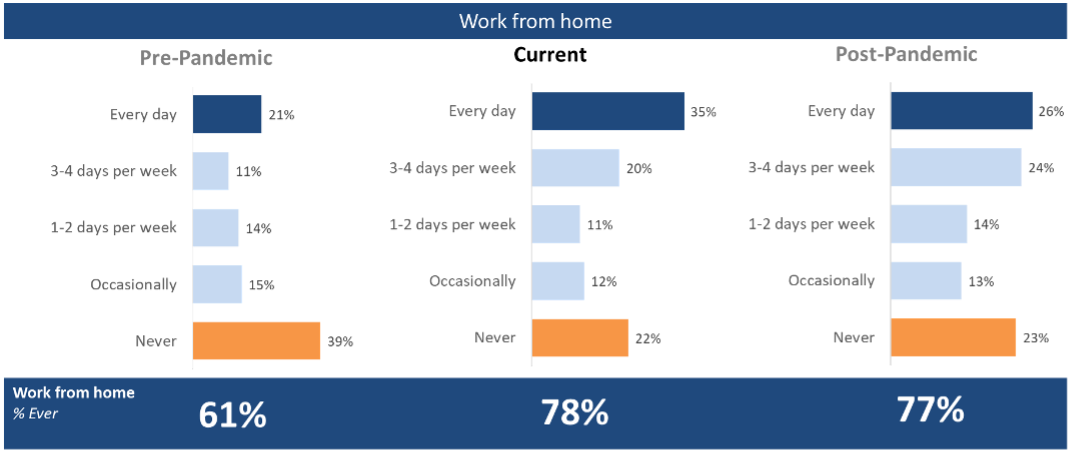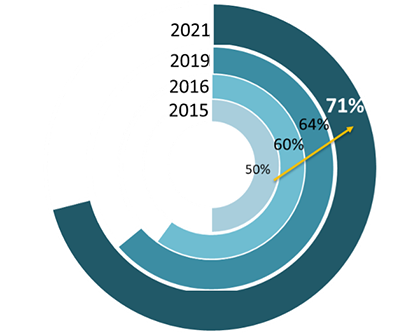The latest Northern Virginia Transportation Authority survey of Northern Virginia (NoVA) residents shows that the proportion of those who have ever worked from home shot up to 78 percent, from 61 percent before the COVID-19 pandemic, indicating the significant impact that the pandemic has had on travel in the region. These and other trends were captured in the fourth NVTA Transportation Perception Survey of more than 600 NoVA residents presented at the March 10th NVTA meeting. While the pandemic may have shifted results from past surveys, the findings continue to help capture residents’ attitudes and behaviors, and inform future analyses, public engagement efforts, and impacts from other potential disruptions.
Proportion and frequency of NoVA respondents working from home

Percentage who live and work in the same city or county (among those employed or students)

Percentage of respondents who say region is doing a mostly “good job” on top priorities

- An increase in perceptions that the NoVA region is doing a “good job” on top priorities has increased to 65 percent from under half (43 percent) in 2015.
- More than half (54 percent) of NoVA residents shop online at least once a week, and almost one third (31 percent) shop online multiple times a week. These findings point to increased freight demands on the region’s transportation system.
- Making sure NoVA’s transportation system is safe, well-maintained/will be around a long time, and affordability are the most important priorities. There is room to improve performance on most measures.
- The potential transportation improvements that are perceived as most important to the region include new/extended metro rail lines, using the latest technologies and upgrading Bus Rapid Transit (BRT). Interest in new or upgraded bike paths and lanes has increased, with the portion of residents that rated these improvements as very or extremely important increasing from 34 percent to 49 percent since 2019. Expanded use of dynamic pricing has also increased in importance.
- News and information gleaned from community meetings doubled (increased 11 percentage points) from the last perception survey, likely a function of increased access through virtual/online meetings.
- More than half (58 percent) of respondents who were aware of NVTA rated the organization positively.
